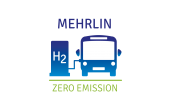The Directive on Alternative Fuels Infrastructure (DAFI), was adopted by the European Parliament and the Council on 29 September 2014.
The Directive :
- Requires Member States to develop national policy frameworks for the market development of alternative fuels and their infrastructure;
- Foresees the use of common technical specifications for recharging and refuelling stations;
- Paves the way for setting up appropriate consumer information on alternative fuels, including a clear and sound price comparison methodology.
The required coverage by which the infrastructure must be put in place is as follows:
|
Mandatory ? |
Fuels |
Objectives/distance requirement |
|
Yes |
Electricity for vehicles |
One recharging point per estimated ten electric vehicles (and for information purposes: at least every 60 km on TEN-T Core Network) |
|
Yes |
CNG |
At least every 150 km on TEN-T Core Network and one CNG refuelling point per estimated 600 CNG vehicles |
|
Yes |
LNG for vehicles |
At least every 400 km on TEN-T Core Network |
|
Yes |
LNG for maritime vessels |
Coverage of maritime ports with mobile or fix installations to enable the circulation on TEN-T Core Network |
|
Yes |
LNG for inland waterway vessels |
Coverage of inland ports with mobile or fix installations to enable the circulation on the TEN-T Core Network |
|
No |
Hydrogen |
At least every 300 km on TEN-T Core Network |
The alternative infrastructure has to be put in place by 2025. Member States provided a first report on their national plans in November 2017.






